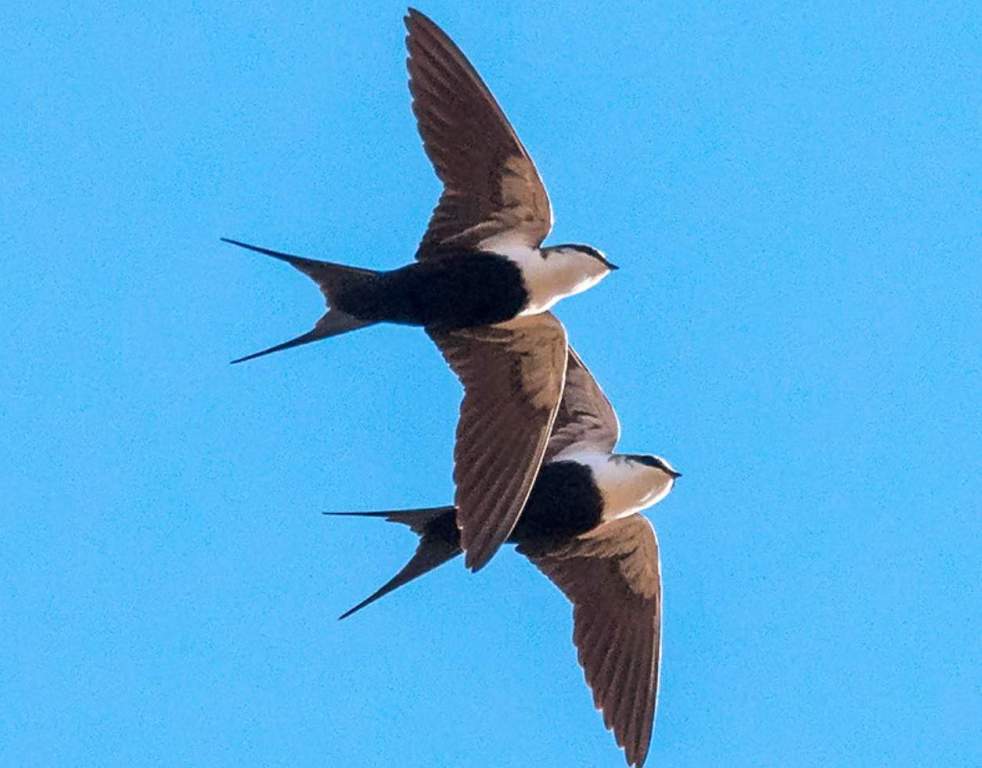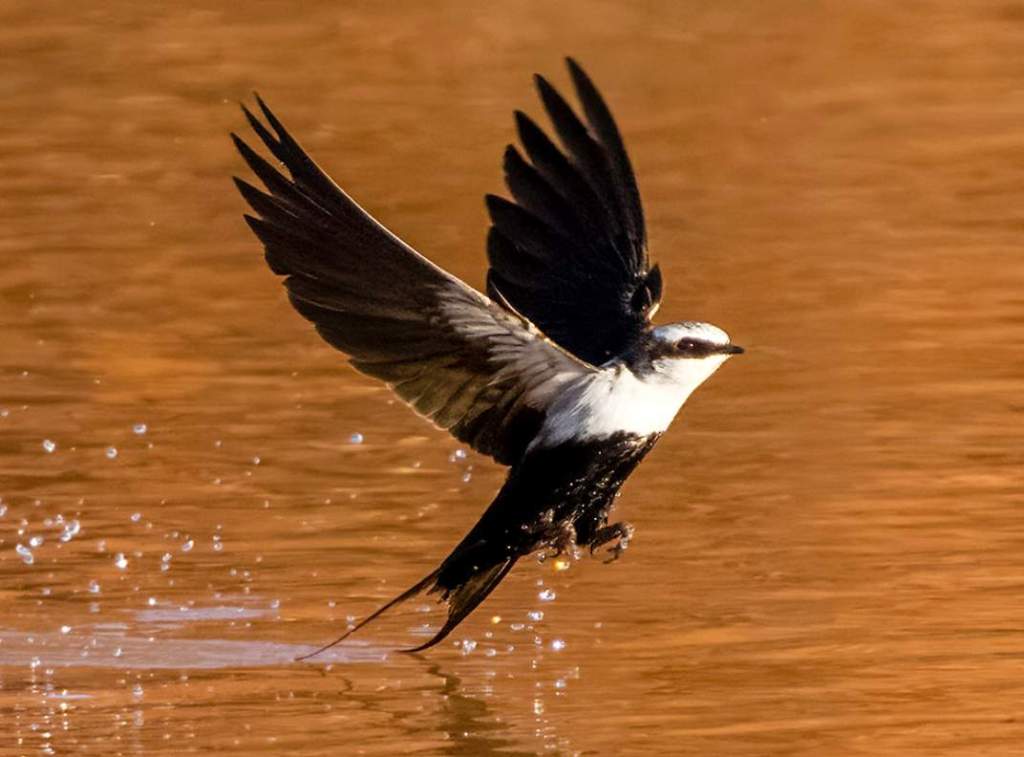Habitat: White-backed Swallow (Cheramoeca leucosterna) is one of Australia’s only endemic species of communal birds. Although they disperse to hawk and feed on the wing along inland watercourses and out over lakes by day, they return to burrows in sand banks, creek banks, roadside cuttings, and gravel pits to roost at night. Up to 80 birds may form a colony, 15–30 of which will roost in a single burrow. Each colony digs out a number of burrows about 4 to 5 centimeters in diameter and 50–80 centimeters deep.
These are used for both roosting and nesting. Only one pair of nesting birds occupies a burrow, and they usually leave the area after breeding. In their burrows, roosting birds cluster together in a chamber at the end, often going into a state of torpor for several days or more at a time during bad weather in winter. This practice, rather than migration, may be their strategy for surviving winters. They occasionally rest in small groups on power lines and bare high branchlets and never come to the ground except to burrow, nest, and sleep.

Vocalizations: White-backed Swallow call is dry, jk, jk in flight. However, the song is very appealing and twittering. The song of the White-backed Swallow is a delightful and melodic twittering sound that is sure to capture the attention of any listener. While in flight, their vocalizations consist of a dry “jk, jk” sound. The combination of their appealing songs and distinct flight calls makes them a joy to witness and listen to in their natural habitats.
Diet: White-backed Swallows feed on small flying insects, taking them in their broad mouths in graceful aerial maneuvers with much Martin-like barking, swooping, and fluttering. In order to take a drink, they fly along the surface of the water at a low altitude and skim it with their wings.
Identification: Both sexes are identical in appearance. The forehead, upper back, throat, and upper breast are white. The crown is mottled and pale brown. Lores, back of the neck, lower back, wings, deeply forked tail, belly, and vents are black. Underwing coverts are white. The eyes are dark brown. The bill is black in color. The feet are dusky gray. The immature bird is a little dull, but the crown is grey; the black areas are dusky. The feet are pink-grey. The tail has a square shape.
Related Article: Lesser Striped Swallow (Cecropis abyssinica)

Nest and Breed: Nesting and breeding occur in August and December. Nests in a chamber at the end of the tunnel are about 50 mm in diameter and one meter long. The nest is dug into the bank of a creek or cut, lined with fine grasses, small leaves, and rootlets.
Eggs and Incubation: A white-backed swallow lays 4 to 6 eggs, normally five; glossy, pure white; oval, about 17 x 11 mm. The incubation period is about 13 to 14 days, probably for both sexes.
Size: The white-backed swallow is approximately 140–150 mm long.
Distribution: White-backed Swallow is found in open fields and lightly timbered country inland, usually near water, though it generally avoids wet areas. It is sedentary and nomadic swallow.
Predators: In addition, there is evidence that predators prey on swallow nests, with foxes and cats being the most common offenders.
Family: White-backed family Swallow is a monotypic species of the family Hirundinidae, genus Cheramoeca.
Status: The IUCN classifies the white-backed swallow as least concern due to its wide range and growing population.
Races: There are no races.







